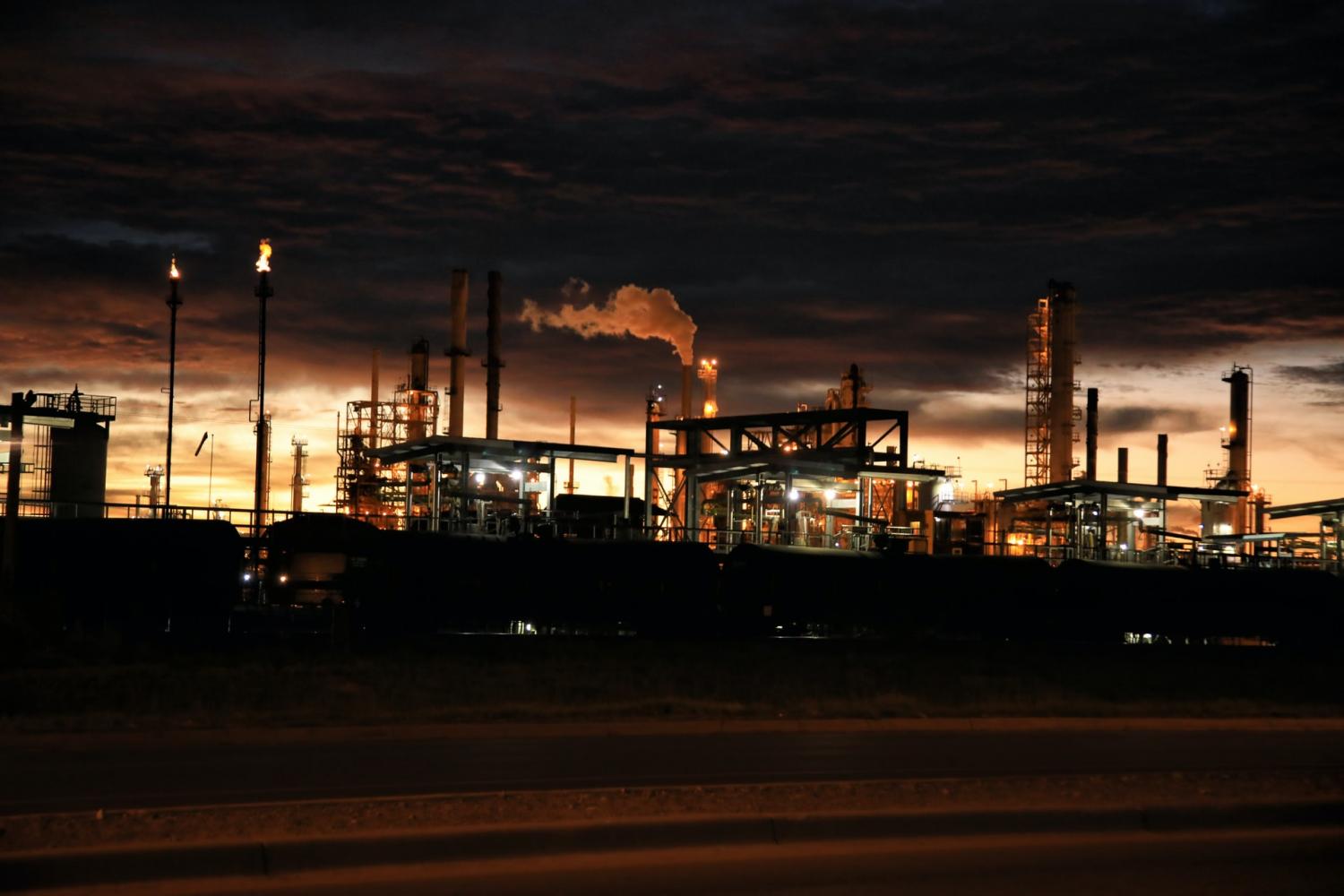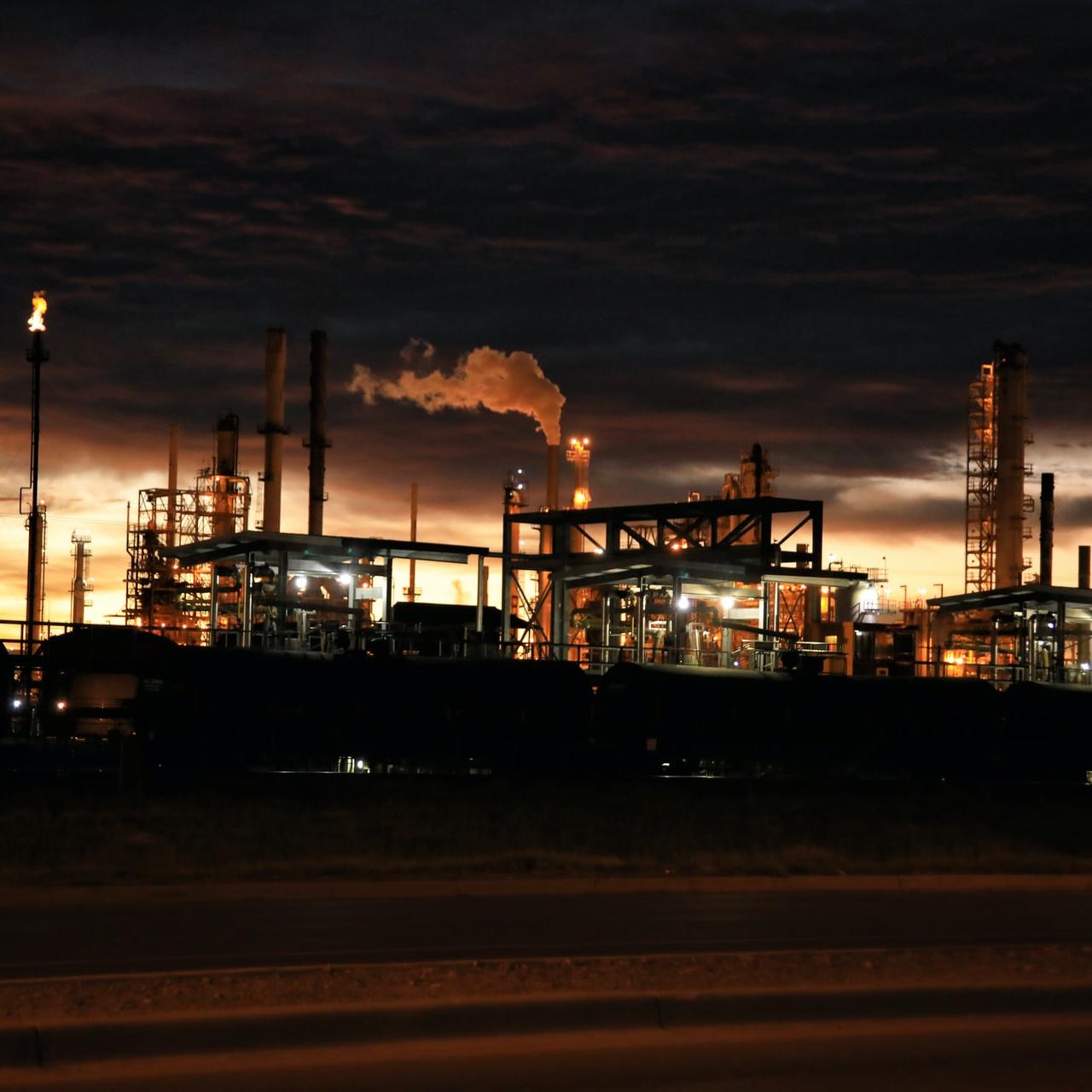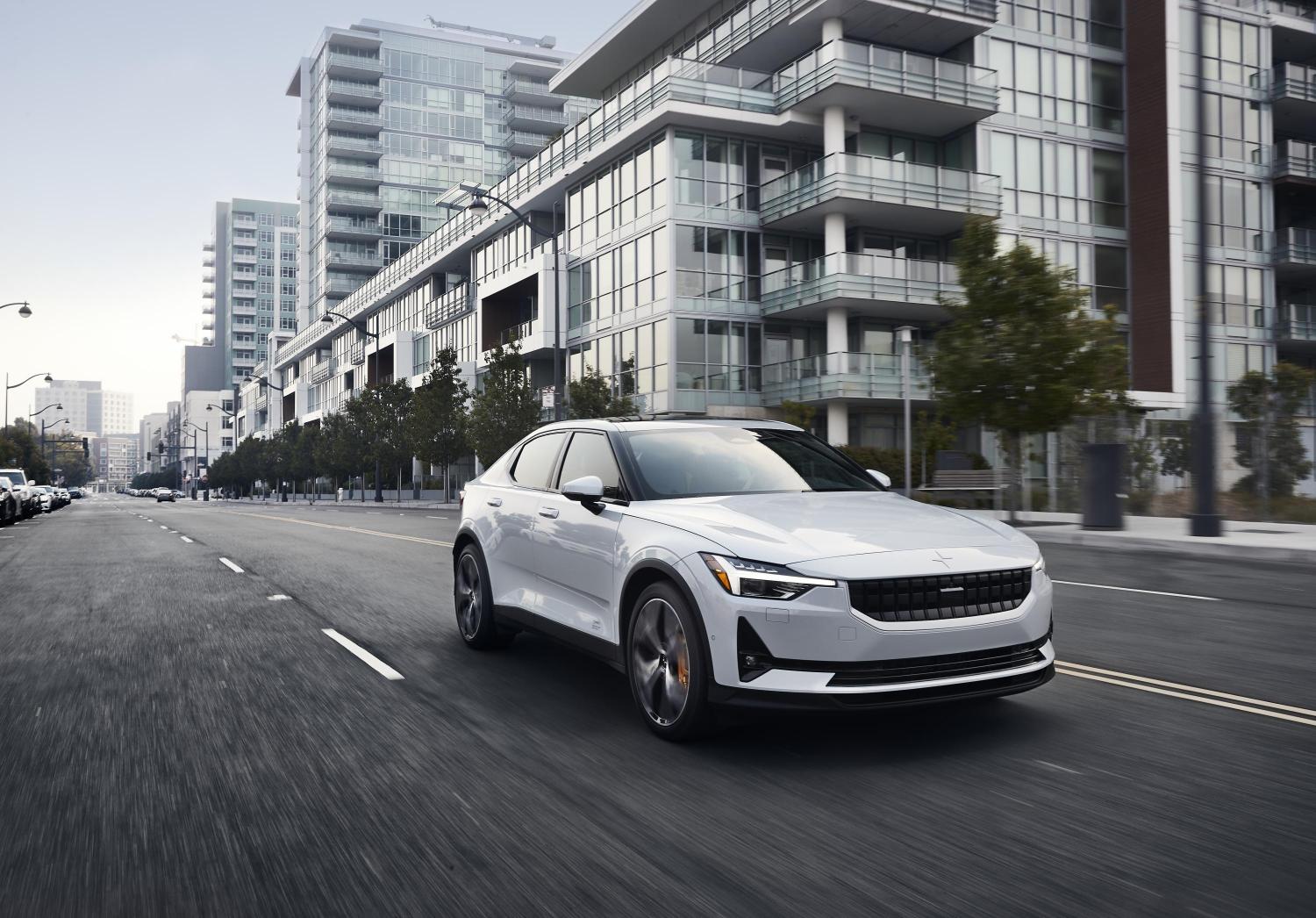Shake Shack Has Teamed with a Tiny, Fascinating Sea Creature to Fight Plastic Pollution


Shake Shack keeps finding new and interesting ways to live up to its “Stand for Something Good” motto. In the latest development, the popular chain of retro-modern restaurants is taking a stand on plastic pollution. The company has introduced biodegradable straws and cutlery at selected sites. In keeping with the company’s quirky image, this is no ordinary bio-material. It is not made from plants. Instead, it is a plastic-like substance naturally produced by an ocean-dwelling microbe.
Shake Shack stands against plastic pollution
The latest Shake Shack venture is significant because it provides a high-profile platform for innovative new products that can help reduce plastic pollution. Shake Shack’s new straws and cutlery are coming from the Restore Foodware branch of the biotechnology firm Newlight Technologies.
Newlight’s new bio-material is called AirCarbon. According to Shake Shack, the new straws and cutlery have the look and feel of plastic, but they can be composted at home.
Shake Shack also notes that the material is made without synthetic glues or other synthetic additives.
To start, Shake Shack plans to roll the new items out at restaurants in West Hollywood, Santa Monica and Long Beach in California this spring, along with Madison Square Park and West Village in New York City, and Miami Beach in Florida.

A plastic pollution warrior like none other
The plastic pollution fight is becoming crowded with bio-based alternatives, but Newlight has carved out an unusual niche for itself.
Conventional single-use plastics are made from fossil energy sources, including natural gas as well as petroleum and coal. When discarded improperly on land, fossil-sourced plastic items can easily travel down rivers and streams to the ocean, where plastic pollution has already reached crisis proportions.
In contrast, AirCarbon is produced by the natural metabolism that occurs when certain ocean-dwelling organisms digest air and carbon-containing greenhouse gases dissolved in saltwater. As they feast, the microorganisms create and store a plastic-like material called polyhydroxybutyrate (PHB).
Like conventional plastic, PHB can be melted and molded into a variety of forms that hold their shape when cooled. Unlike conventional plastic, PHB enables sequesters greenhouse gases that are already airborne, instead of extracting new fossil gasses from underground.
That makes PHB a form of carbon recycling, with the additional benefit of sequestering more carbon than its production requires.
The curious history of PHB
Plant-based bioplastics are fairly common. PHB and other bioplastics made by microorganisms represent another step on the sustainability ladder.
Compared to conventional crops used in bioplastic production, microorganisms can reduce or practically eliminate land use issues. They can also grow and reproduce much faster than plants. In addition, the conditions for their growth and reproduction can involve greater efficiency and less expense than conventional agriculture.
Despite the advantages, PHB has taken more than a century’s worth of research to achieve its commercial potential.
Newlight’s AirCarbon has its roots in 1888, when the first observation of granular specks in the bodies of certain bacteria took place.
Forty years later, in 1927, a researcher succeeded in isolating and identifying the specks.
Newlight Technologies was founded in 2003, almost 100 years later. The company plowed ten years of research into AirCarbon, in order to engineer a microorganism that could create and store far more bioplastic than it normally needs.
AirCarbon was ready for the market by 2013, attracting the attention of early adopters including Dell, IKEA and Sprint.
All hands on deck to end the ocean plastic crisis
All that hard work paid off for Newlight. The company cites a long list of awards for AirCarbon, including Biomaterial of the Year by the Nova Institute, Innovation of the Year by Popular Science, recognition as a Technology Pioneer by the World Economic Forum, and recognition as a Presidential Green Chemistry Challenge Award winner by the U.S. Environmental Protection Agency.
In another interesting twist, earlier this year Newlight teamed up with IBM to introduce a blockchain-based carbon tracker for Newlight’s new fashion brand, Covalent.
As a materials-based solution to the ocean plastic crisis, AirCarbon adds to a growing toolkit that also includes grassroots activism, consumer awareness, new recycling methods, a coordinated global effort and many other elements.
Businesses looking for a way out of the plastic mess now have many options from which to choose. So, why wait? Shake Shack didn’t.
Image credits: Shake Shack corporate site; Facebook
Cancel Culture and the Ethical Center of Corporate Social Responsibility


Business leaders who seek to take a stand against voter suppression are meeting with fierce pushback from Republican elected officials and their allies. The weapon of choice is “cancel culture,” an accusation aimed at characterizing voter advocates as intolerant, overbearing, and undemocratic. “Cancel culture” is clearly meant as a reputational smear, but it contains a much more concerning point of view that goes beyond brand reputation to have an impact on the whole corporate social responsibility movement.
The hidden threat behind the “cancel culture” slur
In the abstract, “cancel culture” is a relatively harmless rhetorical trick. It generally refers to a sort of knee-jerk reaction to any kind of offensive speech, literature, entertainment or other public acts.
However, in practice the phrase has emerged as an anti-liberal and anti-Democratic slur, one that is intended to smother criticism of Republican policies that foster white supremacy.
In the context of Republican support for white supremacists, cancel culture provides a rhetorical weapon against those who criticize hate speech. It confers the moral high ground to a broad interpretation of free public discourse, in which everyone is entitled to articulate hate speech in any public forum, anywhere.
If an entertainment company, sports team, school, media platform or other institution refuses to enable such license, that’s cancel culture in action.
Editor's note: Be sure to subscribe to our Brands Taking Stands newsletter, which comes out every Wednesday.
The basic premise behind the cancel culture slur has been articulated most clearly and persistently by Facebook co-founder and CEO Mark Zuckerberg.
“We care deeply about diversity,” Zuckerberg wrote in a 2016 memo to employees cited by Forbes. “That's easy to say when it means standing up for ideas you agree with. It's a lot harder when it means standing up for the rights of people with different viewpoints to say what they care about. That's even more important (emphasis added).”
The problem is the lack of an ethical or moral anchor for “different viewpoints.”
Zuckerberg refined his perspective somewhat in 2018, when challenged on Facebook’s tolerance for Holocaust denial. Facebook has also tempered its tolerance speech that incites physical harm. Still, the basic theory of speech is the same. In terms of the Facebook platform there is no single point of ethical or moral reference for hate speech. It all depends on the intention of the speaker, and that intention is to be determined by Facebook.
As positioning himself as the ultimate champion of free speech, Zuckerberg also clarifies the moral outrage expressed by white supremacists who feel they are being censored. If Facebook is the arbiter of free speech, then any speech permitted on Facebook should be permitted in any public forum.
That is clearly a specious argument, but former President Trump provides a standout example of how Republican elected officials have worked to normalize this zero-ethics approach to public speech. Time and again he used his public office to elevate public hate speech and celebrate white supremacists with the presidential seal of approval.
Cancel culture and corporate social responsibility
All of this should raise a giant red flag for business leaders who have a stake in the corporate social responsibility movement.
The cancel culture slur is more than a rhetorical dart slung by Republican politicians and white supremacists. It is a direct threat to the central principle of corporate social responsibility.
After all, the whole concept of corporate social responsibility presumes that an ethical center exists, and that business leaders can steer their companies in ways that get them closer to, or farther from, ethical behavior.
Major League Baseball raises the bar
Now the question is whether business leaders are giving up the corporate social responsibility model of ethical behavior in favor of the Facebook model.
In some respects, the Facebook model is winning.
As a group, corporate leaders failed to take action against the 147 Republican members of Congress who supported the failed insurrection of January 6, and they stood by while state legislators introduced hundreds of bills that make it more difficult to vote.
On the plus side, one pivotal, attention-grabbing moment occurred earlier this month, when Major League Baseball abruptly raised the bar on voter suppression protest by pulling the 2021 All-Star Game out of Atlanta. MLB explicitly cast the decision as a protest against a new voter suppression bill signed into law by Governor Brian Kemp.
The MLB decision brought the cancel culture slur roaring into the media spotlight, with Kemp providing a representative example.
“It means cancel culture and partisan activists are coming for your business, they’re coming for your game or event in your hometown, and they’re coming to cancel everything from sports to how you make a living,” Kemp said last week, in a widely reported criticism of the MLB decision.
Employee activism in play
It remains to be seen if corporate citizens finally turn off the flow of money to the Republican elected officials who support voter suppression. However, it does appear that more business leaders are finally waking up to the potential for the cancel culture slur to undermine corporate social responsibility movement.
On March 31 a group of 72 leading Black executives took out a full page ad in The New York Times to protest the new wave of voter suppression bills. More than 200 other business leaders followed up on April 2 in support of that effort, through a public letter organized by The Civic Alliance.
Letter-writing is all well and good, but the corporate movement in support of voter rights will most likely fade with time, unless something happens to provide it with additional momentum.
One factor that could come into play is employee activism. Employee activists have become increasingly outspoken and influential in corporate policy, and the voter suppression bills have sparked a new wave of activity in that area, as illustrated by the MLB decision.
Lisa Lerer, the New York Times National Political Correspondent, deftly underscored the power of employee activists last week in her On Politics newsletter.
“An M.L.B. source described what many within the league saw as an untenable scenario for the sport: A number of players would refuse to participate in the game. The remainder would have been asked — over and over again — about their positions on the voting law,” Lerer wrote.
Few workers have the high profile and financial clout of professional athletes, but many possess skills and institutional knowledge that employers can’t afford to lose. Business leaders that aim to recruit and retain top talent should be doing everything they can to push back against the cancel culture smear and stand up against voter suppression.
Image credit: Marcus Winkler/Unsplash
Transgender People Face More Legislative Attacks, In Part Due to Checks Written by America's Top Brands


At least 28 U.S. state legislatures are passing or considering bills that attack transgender youth. Whether the legislation bans medical treatments for trans youth in the name of “science,” or curtails trans girls and women from participating in sports in order to ensure “fairness,” the flurry of such activity in state capitols is breathtaking.
And it’s breathtaking in a destructive, cruel way. Hence organizations from the American Medical Association to dozens of America’s largest companies have publicly stated their opposition to any anti-transgender legislation.
Yet weeks before Pride Month, when companies switch to rainbow flag logos and push out communications about what they are doing for the LGBTQ community, there’s a problem: Many of the same companies that have spoken out against anti-transgender bills are also funding the politicians fighting to roll back any protections for this 0.6 percent of the population who still live largely in the shadows.
In the wake of an Arkansas bill that restricts medical treatments for trans youth, which became law last week, the next focal point of the political backlash against the transgender community is North Carolina. Five years after the state lost the NBA All-Star Game after passing a largely panned anti-trans “bathroom” bill, NC legislators are at it again. Proposed bills include measures such as requiring teachers to out transgender students to their parents, blocking certain medical procedures to LGBTQ youth under 21, and allowing any entity within the state’s wider healthcare industry to deny any services or information if it conflicts with the provider's “conscience.”
Many companies either based in North Carolina or conducting business in the state have spoken out against the legislation, but independent journalist Judd Legum isn't buying it: “The sponsors of S514 [an anti-trans bill making its way through the North Carolina legislature] are supported by corporations that hold themselves out as ardent supporters of LGBTQ rights," Legum wrote in his Popular Information newsletter on Monday.
Editor's note: Be sure to subscribe to our Brands Taking Stands newsletter, which comes out every Wednesday.
That list of companies includes an alphabet soup of brands, including American Airlines, Atrium Health, Blue Cross Blue Shield North Carolina, Cigna Duke Energy, UnitedHealth Group and Wells Fargo.
Legum points out that while these companies have often been public about their support of transgender citizens and the wider LGBTQ community, they have also funneled financial contributions to the sponsoring lawmakers behind S514.
One could make the argument that when a company makes political donations, it doesn’t necessarily know what kind of legislation that lawmaker will support in the near future. But as we saw last year with the global pandemic and fight for racial justice, the “both sides” argument does not hold water any longer. The lesson companies must learn in 2021 — one that was amplified in the wake of the January U.S. Capitol riots — is that the least companies can do is to back their words with action.
In the case of North Carolina, such action means demanding that those political contributions in question be returned, and making it clear such checks won’t be cut or wired again.
Image credit: Lena Balk/Unsplash
Drought Is Consuming the Western U.S., but Water Technologies Offer Lifelines


It’s only April, but in parts of the U.S. Southwest, it already feels like summer. With temperatures in the upper-90s last week and virtually the entire western half of the U.S. in drought, it seems we can prepare for yet another year of record-breaking weather.
Parts of Texas have yet to recover from the deadly winter storm two months ago while now facing an onslaught of hot, dry days punctuated by the upcoming hurricane season. It’s not unprecedented: Texas last saw such a severe winter storm in 2011, followed that summer by the worst year of the state’s multiyear drought which included 90 days of 100 degrees-plus temperatures and catastrophic wildfires.
But although most of Texas is in drought, the biggest area of concern is the Southwest, where some scientists say that states are in the throes of a megadrought, meaning an intense drought that lasts for decades or longer. In recent years, it has felt like a continuous drought, occasionally punctuated by rainfall relief. It brings to mind the saying attributed to a meteorologist in the 1930s, who said Texas is “a land of eternal drought, interrupted occasionally by biblical floods.”
The problem is, those eternal droughts and biblical floods have gained intensity in the last century. Climate change projections for the region from Texas to California present a stark water picture.
Climate change, drought and economics
The western U.S. is also home to rapid economic growth. According to the Census Bureau, 11 of the 15 fastest growing cities are in western states, in particular across Texas and Arizona. Unfortunately, climate change also threatens the economic wellbeing of those states.
Recently, the Institute for Public Policy Integrity at the New York University School of Law conducted a survey of 738 economists, Gauging Economic Consensus on Climate Change, which found that the benefits of taking action on climate change far outweigh the costs. This aligns with recent findings that the U.S. could save $8 trillion if Paris Climate Agreement targets were met compared to business-as-usual, and that figure is considered conservative. This is not wholly unexpected when we look at the number of multi-billion dollar natural disasters over the past few years, from the $16.6 billion in damage attributed to California wildfires in the fall of 2020 to the $133.8 billion cost of Hurricane Harvey in 2017 - and everything in between.
Further, according to the same study, more economists are on board with taking urgent action as climate models are consistently proven right in terms of increased intensity and duration of extreme weather events. Drought, in particular, has devastating cascading effects. Drought directly has an impact on agriculture, which could lead to depressed economies in farming communities as well as increased food costs for society overall.
Droughts also pose problems for the power generation sector: in hydroelectric power as well as fossil- and nuclear-powered electricity, which all rely on considerable amounts of water for generating electricity. Less critical, but no less important for local economies, are the effects on water recreation and the businesses that support it, from boat rentals and sales to restaurants and shops that cater to the participants.
Cities, especially in the drought-riddled west, will increasingly compete with these sectors for water. More straws in smaller pools could lead to conflict, as already witnessed in the long-standing tri-state water wars in the southeastern U.S. Further, economic booms will be limited if companies can’t rely on water being available for their operations. Luckily, cost-effective solutions already exist to address these problems.
Cost-effective water technologies for taking on drought
The energy-water nexus offers cost-effective carbon emission reductions. At the utility level, wastewater and drinking water utilities often comprise 30 to 40 percent of a city’s electricity demand. Because the majority of our electricity is generated using water- and carbon-intensive fossil fuels, deploying energy efficiency in those utilities’ operations is a win-win: It reduces energy demand (and lowers bills), which lowers carbon emissions, and it also reduces both operating costs at the water utility level and loss of non-revenue water.
Further, water efficiency projects could potentially deliver the same carbon and energy demand savings as traditional electric utility energy efficiency programs, but at considerably lower costs. Unfortunately, with a few exceptions, most electric utilities still pursue the age-old energy solutions in a silo, rather than partnering with water utilities for deeper emissions reductions.
Other opportunities abound for the energy-water nexus at water utilities. Floating solar - sometimes called “floatovoltaics” - reduces evaporation rates of retention ponds and keeps the solar panels cool and thus increases their efficiency. Biogas collection at wastewater treatment plants reduces methane emissions and can power systems with net-zero energy. Smart grid technologies can reduce leakage rates, which are as high as 40 percent in some areas, decreasing both the lost revenue and the energy and water that are literally flushed away by treated water not making it to its intended target. All of these are proven technologies, and with appropriate policy direction and investment opportunities, will only become more cost-effective the more they’re deployed.
If the majority of over 700 economists who study climate impacts on the economy feel the need to take action is urgent, even more so than five years ago. They reiterate that governments and businesses should deploy every weapon in their arsenal to prevent economic disaster from unmitigated climate change.
We are past the point of simply looking at inside-the-fence energy efficiency solutions at electric utilities. We need an economy-wide approach, and the water sector has vast potential and nearly unlimited opportunities to contribute. A more holistic approach to the energy-water nexus from both sides of the coin simply makes cost-effective sense. And for drought-stricken areas, conserving every last drop has never been more important.
Image credit: Olivier Chatel/Unsplash
The Fossil Fuel Sector, Subsidies and Job Creation: Sorting Fact From Fiction


The energy industry is undergoing a fundamental shift. Exactly how quickly the world will adopt clean energy is still unclear. One significant argument for keeping society’s fossil fuel love affair going is to protect jobs in the conventional energy sector. But how safe are those jobs really?
A new analysis shows that employment in the fossil fuel sector will drop 20 to 30 percent, regardless of the transition to renewable energy. Also, many of the oil industry jobs that were lost in 2020 due to decreased demand from the pandemic are not likely to return. The following are rebuttals against the argument that fossil fuel companies support high-quality jobs — which, together, make the idea of subsidies to help an ailing industry even less appealing.
Robots could replace oil and gas workers
Recent analysis from the research firm Rystad Energy highlights that robotics could replace hundreds of thousands of oil and gas workers globally by 2030. This move would reduce drilling costs by several billion dollars and in turn shrink the size of both onshore and offshore crews. If the United States did reduce its staffing needs according to Rystad Energy’s estimates, this would equate to 140,000 lost jobs.
Learning from the ailing coal industry
The coal industry has experienced a long decline in employment over the last century. At its peak in 1923, there were 863,000 coal mining jobs. As of 2020, there were only 40,000 jobs. Despite former President Donald Trump’s promise to “bring those miners back,” employment and production actually declined during his presidency. Coal mining jobs tend to be highly concentrated in certain areas in the U.S. — and most of the activity is taking place in Wyoming, where the industry is beginning to face more challenges. Thus, the effects of the industry's decline are especially pronounced in these communities.
Who is the culprit causing declining coal employment since its heyday? Mechanization makes the industry far more efficient and safer than when workers used pickaxes and pushed carts. The rise of natural gas and, to a lesser extent, renewable energy have curbed demand for coal. Barack Obama-era policies that were largely reversed during the Trump administration slightly furthered its decline.
Sadly, the waning of the coal industry has taken its toll on workers. From 2011 to 2016, demand for coal tanked, both internationally and domestically. Three of the four largest U.S. coal companies declared bankruptcy, shedding hundreds of millions in retiree pensions and healthcare benefits.
Further fossil fuel industry layoffs
According to the nonprofit Bailout Watch, 77 oil and gas companies received $8.2 billion in pandemic-related tax breaks yet still laid off 16 percent of their combined workforce of 58,000 employees. The layoffs are due in part to automated operations reducing the need for workers.
Jobs in renewable energy
The Joe Biden administration has been looking to the renewable energy sector to create high-quality jobs as jobs in fossil fuels phase-out. Jobs in renewable energy tend to be well dispersed throughout the country and not so concentrated in specific areas, unlike coal mining jobs. As of 2020, there are 523,000 employed in the renewable energy sector, and the solar energy industry employed 345,000 in the United States, with significant anticipated growth. These are encouraging numbers, but there are some issues to keep in mind.
Although construction has traditionally been difficult to automate, the solar energy industry is also experiencing some digitization and automation within construction and manufacturing.
One criticism of the renewables sector is that women and people of color are underrepresented, according to a 2019 study. As with many industries in the U.S., the discrepancy is structural, as one Inside Climate News report from last summer explained. Bottom line: This is still a very white and male-dominated industry. “The overall solar workforce is 73 percent white, and women and gender non-binary people make up less than 28 percent of solar workers,” TriplePundit’s Mary Mazzoni wrote that same year.
Fossil fuel subsidies
According to conservative estimates by the Environmental and Energy Study Institute, direct subsidies and tax benefits to the fossil fuel industry in the U.S. total about $20 billion annually. Of this, 20 percent goes to coal and 80 percent to petroleum and natural gas. According to the IMF, fuel subsidies disproportionately impact the wealthiest while providing little value to the bottom quintile of the population. Thus, fuel subsidies can exacerbate income inequalities.
Historically, these subsidies were intended to lower production costs and ensure domestically extracted energy sources. However, many of the external costs of fossil fuels, such as their impacts on health and the climate, are not included in such figures. External costs can be significant and more challenging to quantify. Besides, the oil industry knew about the impact of burning fossil fuels on human health yet aggressively lobbied against regulations. A common plug for fossil fuel subsidies is the need to protect industry jobs, but this has become highly questionable.
Subsidies have had a large impact on the availability and cost of fossil fuels. Keeping their prices artificially low by ignoring environmental and social costs, such as climate change and acid rain, leaves a significant burden unaccounted for. Fossil fuel subsidies also enable overconsumption, further fueling the issue.
Historically, humanity has switched fuel sources many times throughout its existence. The waning use of coal and the adoption of renewable energy show a slow but needed shift. Finally, peak oil consumption might have also already passed, according to a September 2020 BP report.
Although fossil fuels’ short-term benefits are hard to deny, such as their immediate impact on productivity and economic growth, there are few positive long-term attributes. If even their ability to create decent jobs is in question due to automation, the glaring external costs become even harder to ignore.
Image credit: Robin Sommer/Unsplash
These Brands Are Working to Build Vaccine Confidence in the U.S.


Even as President Joe Biden sets new vaccination goals and vaccines become more widely available, there is still a concerning amount of hesitancy from Americans to get vaccinated. Health experts have said to truly curb the virus, as many individuals as possible should receive the vaccine — and it will take organizations, government entities, community centers, celebrities, and individuals of all shapes and sizes to encourage vaccinations. This week, we’ll highlight companies that are lending their brand and marketing power to build more confidence in receiving the vaccine.
Ford Motor Company worked with eleven nonprofits to create a PSA to fight misinformation surrounding vaccinations, especially in Black and Hispanic communities. The #VaxWithFacts spot delivers a message of unity, support and advocacy to combat the spread of misinformation among diverse populations. It features leaders from all of Ford Fund’s Multicultural Advisory Committeeincluding organizations like the Arab American and Chaldean Council, Latin Americans for Social and Economic Development, the National Urban League, and others.
Budweiser has continued to make headlines around their efforts to provide relief in the pandemic. Now, the beverage company has partnered with the Ad Council to create a health campaign dedicated to COVID-19 vaccine awareness and education called “Good Times Are Coming.” Monica Rustgi, Budweiser’s Vice President of Marketing explains why Budweiser is the company to produce this campaign: “As America’s most iconic beer, we’re uniquely positioned to use our influence to remind people how close we are to being able to celebrate together, thanks to these vaccines.”
Walgreens and John Legend teamed up to create a campaign called “This Is Our Shot,” to build awareness that the COVID-19 vaccine is available and is the best way to put an end to the pandemic. The video shows heartwarming snapshots of ways we can get back together once vaccinated, from barbeques to sporting events, with overlaid narrative by the trusted voice of Legend making the plea to get vaccinated. This campaign is part of Walgreen’s many efforts to equitably curb and ultimately end the pandemic.
Throughout the pandemic, companies have provided support to the effort in new and different ways to meet the moment. At the onset, organizations provided urgent and acute support through donations, paywall removals, and product and service innovations. But as the pandemic continues, companies too must evolve their support to solve for the pressing needs of the day. There is still work to be done to put an end to the pandemic, but the communications brands have put together can play an important role in helping to build trust in the vaccine and ultimately get us back to ‘normal.’
Previously published in the 3BL Media Newsroom.
Image credit: Steven Cornfield/Unsplash
Banks Are Under Fire for Their Funding of the Climate Crisis. Here’s How One Says It’s Stepping Up.


It does not take much internet sleuthing to end up gorging on data and analysis that suggests many of the world’s largest financial institutions have lit many of the matches that fired up the global climate crisis. Much of the criticism is based on the fact that the same financial institutions which say they are all-in on fighting climate change are also financing fossil fuel projects — to the tune of almost $4 trillion since the Paris climate agreement alone, according to one estimate.
The fate of the planet and global banks are intertwined
As with companies in any sector, banks loathe to admit they are responding to any outside pressure, but the handwriting is on the wall — partly in the form of pressure from the likes of activist investors and environmental nonprofits. Further, organizations including Ceres offer analysis time and again suggesting the climate crisis poses its own threats to the global financial sector. Such risks include mortgages that could be affected by overbuilding along the coasts and stranded assets abandoned by a shrinking fossil fuel industry. At the same time, banks are primed to lead, not dodge, the global push to take on climate change.
“For the global economy to decarbonize quickly, there is no substitute for political leadership from the top,” wrote TriplePundit’s Tina Casey in late 2019. “Nevertheless, investors and other financial stakeholders are positioned to hold the torch until national governments come up with a more aggressive position on climate change.”
Bank of America has its plan to address the climate crisis
To that end, Bank of America recently ramped up its long-term plan to address the climate crisis. Last week, the bank said it would add a financial boost to what it calls its environmental business initiative. Bank of America claims that since 2007, it has already distributed more than $200 billion in financing for low-carbon and sustainable business projects worldwide. If all goes according to plan, the total amount Bank of America will commit to services including lending, capital raising and advisory services will reach $1.5 trillion by 2030.
The company also notes that its involvement has helped deploy 33 gigawatts of renewable power capacity across the U.S. since 2015. On the social sustainability side, Bank of America’s efforts include a $2 billion bond launched last year, which the company says will help foster progress on racial equality, new economic opportunities, and investments in renewables and transportation that could benefit marginalized communities.
Could banks do (or not do) more?
For some critics of the financial industry, such announcements also raise questions about banks’ commitments to climate action when a closer review of their leadership suggests otherwise. For example, journalists Emily Holden and Emily Atkin recently took a look at America’s largest banks and their boards' ties to the financial sector. Citing data from the British investigative media outlet DeSmog U.K., it turns out that directors with past or current links to companies that add to the climate crisis often dominate these corporate boards. The list of financial giants reads like a VIP list of companies that say they are focused on the climate crisis: JPMorgan Chase, Wells Fargo, Morgan Stanley and Citi all have boards in which a minimum of 75 percent of the directors have ties to the fossil fuel industry or another carbon-intensive sector.
To be fair, this is not a uniquely American problem. And even if these same banks suddenly stacked their boards with executives who can boast ties to organizations like Tesla, Ørsted, Patagonia or Greenpeace, the climate crisis wouldn’t recede at any point soon. Look far past the borders and shorelines: There are plenty of other industrial powerhouses hosting banks that have a similar corporate governance problem, including the United Kingdom, Canada, France and Japan.
Many of these same directors are backing the controversial new route in Minnesota for the Line 3 pipeline, which opponents say would have a destructive impact on land home to Native Americans on top of the climate change arguments. Critics of the project, including Native Americans in Minnesota, have also pointed out that massive fossil fuel projects result in additional unwanted pipelines — as in those funneling illegal drugs and human trafficking.
Image credit: Cullan Smith/Unsplash
Louisiana and Maryland: Two U.S. States Among Many Reporting Racial Bias in COVID-19 Relief Efforts


We’ve said it before, we’ve said it often and we’ll say it again: COVID-19 hasn’t revealed inequalities in the U.S., but has exacerbated those that already existed. And as federal largess spreads across the country and filters down to the local level, evidence suggests that the whiter the community, the more money it's likely to receive. The cruel reality is that the towns and communities that need the most assistance are often receiving the least. For every Black-owned business that scored a segment on feel-good television shows like Good Morning America, countless other businesses and services have already lost any chance for survival.
Louisiana: The poorer you are, the less relief funding you should expect
Take, for example, what’s been going on in Louisiana. A recent report issued in tandem by the Hope Policy Institute and Louisiana Power Coalition has found many local governments (called parishes in the Pelican State) with a majority population of rural, poor or people of color received far less funds than their wealthier counterparts. For example, one analysis found that parishes home to a majority of people of color got less than 40 percent of the funds they requested from national COVID-19 stimulus packages. For majority white locales, that figure stood at 52 percent.
“The government’s ability to respond efficiently in times of disaster can make all the difference for a faster recovery and more resilient future. It’s very likely that the very communities that would have benefited the most from relief funds are the ones most left behind and will feel the economic burden longest and hardest,” said Calandra Davis, a policy analyst at the Hope Policy Institute, in an emailed statement to TriplePundit. “We hope that this research will allow us to work towards a better, more equitable future in the Deep South and were honored to partner with the Power Coalition in their efforts to right-size relief efforts in Louisiana.”
The poorer the parish, the worse the disparity became: For example, the least wealthy parishes (those facing “persistent poverty,” as the report describes), received less than a third of what should have been their allocated funds. The funding gap also showed when comparing those same poor and rural parishes: In terms of actual dollar amounts, poor Black parishes received less than 7 percent of what poor majority-white parishes received in COVID-19 relief funding.
“Inequitable distribution of funding to reimburse these costs will mean fewer resources in the future for jurisdictions that were largely left to fund the response on their own,” the report concluded. In other words, the poorest communities that received the least funds will have an even steeper hill to climb over the next several years.
In Maryland, the size of small business loans depends on where you live
A thousand miles away, a similar situation has already unfolded in Maryland.
Last fall a study from the nonprofit news organization Capital News Service analyzed Small Business Administration (SBA) data and found a wide disparity in Paycheck Protection Program (PPP) loans. Out of approximately 60,000 loans the program distributed to smaller Maryland-based businesses, there was a $7,000 gap in average loan size between majority-white and majority-Black ZIP codes. Put another way, business owners in white communities on average scored loans more than 20 percent larger than those in Black communities.
That schism in funding mirrors the gap in COVID-19 prevention efforts across the state: In February, a Baltimore Sun report concluded that white Marylanders were receiving COVID-19 vaccine doses at a rate four times higher than that of their Black neighbors.
An opportunity for companies to step up for equitable COVID-19 assistance
Such disparities have been reflected across the country, in both the disbursal of economic relief funds and the healthcare access necessary for the treatment and prevention of COVID-19. This reality is hardly a sudden development: Last summer, a Journal of the American Medical Association study concluded that the way healthcare funding was allotted under the federal CARES Act largely rested on hospital revenue data, not actual COVID-19 cases — which ended up short-changing Black communities across much of the U.S.
“The federal government is doling out pandemic relief money to hospitals using a formula that discriminates against predominantly Black communities because, in general, less is spent on their health care even when their need is greater,” wrote Bloomberg’s Dina Bass and John Tozzi last fall.
We have a situation where industries that for decades contributed to racial inequality in the U.S. — financial services and healthcare — are actually now in a position to fill in the gaps where the federal government has fallen short. Some banks are undertaking such efforts: Bank of America’s five-year, billion-dollar-plus plan that it updated last month is one such example. But as with the case of healthcare companies, financial companies have a long road ahead as they start to address the inequities they helped to fuel in the first place.
Image credit: Brandy Kennedy/Unsplash
Volvo’s Polestar Targets Climate-Neutral EVs by Decade’s End


Photo: The Polestar 2, a midsized all-electric vehicle currently available in markets including North America and Europe.
Supporters of electric vehicles (EVs) tout these cars’ climate-friendly credentials compared to conventional automobiles. And while the vast majority of metrics suggests that assumption to be true, there is no shortage of caveats. The extraction of raw materials necessary for EVs, such as lithium and cobalt, is an energy-intensive process, and critics of the industry point to numerous environmental and human rights problems. Questions about these vehicles’ carbon emissions, depending on whether they are recharged in communities that rely on coal versus cleaner sources of power, are also a point of discussion. Then we have to look at the overall sustainability of the cars’ materials — and of course what happens when EVs’ battery packs reach the end of their lifecycle.
Nevertheless, most experts on the subject agree that EVs are a far more efficient and responsible option — hence most of the world’s automakers, from GM to Jaguar, are committing to bold long-term electric car targets.
Nevertheless, one automaker says it will leave no stone unturned when it comes to the sustainability street cred of its EVs. Sweden-based Polestar, owned by Volvo Cars (and, by extension, Geely), recently announced its “moonshot” goal of a genuinely climate-neutral car by 2030.
How exactly that will happen is still under wraps. The brand’s cars are currently manufactured in China, which raises countless questions on its own. But Polestar has made its long-term goal clear: It estimates that the current 26 tons of carbon emitted to manufacture one Polestar 2 will incrementally decrease each year, reaching zero by decade’s end.
For that to happen, Polestar realizes it has to take a look at everything involved with manufacturing its EVs, whether it’s the aluminum, steel, battery components or the materials comprising the cars’ interiors.
And no, we’re not talking about planting trees or purchasing carbon credits in any form.
“Offsetting is a cop-out,” said Polestar CEO Thomas Ingenlath in a public statement. “By pushing ourselves to create a completely climate-neutral car, we are forced to reach beyond what is possible today. We will have to question everything, innovate and look to exponential technologies as we design towards zero.”
Polestar claims a climate action mindset is already integrated within the business, and the employee bonus structure at the automaker is designed in part to help meet its climate targets.
Much of this drive’s long-term success depends on transparency, as Polestar said it will start this process by disclosing its current cars’ carbon footprint and traced risk materials. The company will then post additional information on its website so stakeholders can monitor any progress.
Last week’s pledge is just another step in the company’s progression toward climate neutrality since its first EVs were announced back in 2017. Last year, Polestar announced it would start taking on more waste reduction efforts, which included tactics such as finding ways to reduce its EVs' overall weight as well as phasing out plastic or replacing it with plant-based materials.
Image credit: Polestar corporate site
New Plant-Based Foods Keep Arriving on Supermarket Shelves. We Tried a Few of Them.


More and more plant-based foods are hitting grocery store shelves, and there’s a reason: Consumers are increasingly open to trying foods that are cruelty-free and have less of an environmental impact. Most analysts agree this niche market is growing so fast that, in fairness, we should no longer call it “niche.”
As we are always told, competition is good for the marketplace, and with more competition, plant-based entrees and snacks keep getting better year after year. So many new products are rolling out that it’s difficult to keep track. If you’re looking to ditch meat and dairy, or are on the hunt for alternative sources of protein, you have far more options today than the sad, pallid veggie burgers of the early 2000s.

Let’s start with plant-based entrees

Cool Beans: It’s a wrap: When you’re in a hurry and just want something fast, wraps are the perfect way to fuel up. These wraps are truly plant-based: There is no processed soy, wheat gluten or mycoprotein in them. Instead, they are chock-full of whole ingredients like legumes, grains and vegetables. And as for that dietary checklist, these wraps are gluten-free, dairy-free, soy-free and egg-free … i.e. vegan.
Pros: When I noshed on the Tikka Masala option, this omnivore for sure thought there was chicken in it. But nope, it’s just a very well-done blend of chickpeas, coconut milk and masala seasoning with vegetables. “I could have eaten two more of the Moroccan ones,” said 3p’s partner sampler in crime.
Cons: The only cooking instructions were for the microwave, and with anything starch-based, we know how that goes: The sogginess of the wrap can get in the way of blissful yumminess, so experiment with the toaster oven, cook them on the stovetop in an iron skillet, or try microwaving for a bit and then pop them into the oven to enjoy that toasty texture.

LikeMeat: Are you into chicken, whether it’s barbecued, roasted, nuggets or grilled, but seek an alternative? These new products, currently available at Sprouts, are a tempting option. Made with soy (non-GMO, the brand clearly states), all four varieties are worth trying out.
Pros: Well flavored and spiced, with no messy, sugary or sticky flavor packets to add, and if you are packing in the protein, these foods will help you reach your daily bulking-up goal. The company also offers various cooking options, conventional and for the microwave. “Surprisingly awesome,” said a friend of 3p.
Cons: Like many plant-based fake meat products, the texture can come across as rubbery.

Beyond Breakfast Sausage: These are heady times for Beyond Meat, which recently announced a new factory outside of Shanghai, China. Its new line of breakfast sausage has been out a while, but we’ve noticed it is in more stores, so we tried it.
Pros: This is way better than the standard, gritty disks of soy made by ... we’ll just call the brand “EveningSun." This is weekend breakfast as we love it, without animal cruelty. And if you’re avoiding soy, Beyond's pea-based sausage links are a great alternative.
Cons: If you’re watching your saturated fat intake, stick to oatmeal, or just don’t read the nutrition label — part of that texture is due to coconut oil, after all.

What about between meals?

Pop Bitties: Remember those GeniSoy soy crisps that were all over the place a decade or so ago, were repackaged as private label goodies for stores like Trader Joe’s, but have long since disappeared? Well, they’ve reemerged again in a different form and formula, thanks to Mark’s Mindful Munchies. For those skittish about soy, Pop Bitties are a snappy blend of sorghum, chia, quinoa and rice; flavor options include both savory and sweet.
Pros: “I don’t feel like I need to cancel out the flavors with sour cream and Lipton French Onion soup mix,” said one sampler. He’s right: Whether you crave spicy, salty or sweet, the flavors are perfectly subtle. It's hard to stop at one bag.
Cons: We definitely noticed a grit factor, so if you have a few fillings in those molars or have sensitive teeth, let the chomper be beware. Ouch!

Kite Hill yogurt: Earlier this year, Kite Hill relaunched its almond-based yogurts after listening to consumers’ feedback, and the new products are a huge improvement. The creamy texture, we dare to say, is even better than a lot of the dairy-based options found in stores, which often include gelatin as an ingredient. Purists may object to Kite Hill’s use of starch, citrus fiber, locust bean gum and xanthan gum, as well as almonds, but for consumers who wish to avoid animal products yet want to get that digestive culture groove going on, Kite Hill is one of the best plant-based options out there.
Pros: Creamy texture, creamy texture, creamy texture.
Cons: You won’t get a lot of calcium from these yogurts, so depending on your diet, consider taking that calcium-vitamin D supplement based on what you and your healthcare provider think is best for you.

Miyoko’s Creamery cheddar slices. Yes, this brand has been around a while, but it deserves a mention. Many of us love cheese, but not the fat content, and those conscious of dairy's environmental footprint or impact on animal welfare often prefer turning to plant-based alternatives. Yet the problem with fake cheese is twofold. First, many dairy-free cheese products have ingredients such as potato starch and coconut oil, which offer little nutritional value. Then, of course, there is the texture — if David Rose thought folding in shredded dairy cheese was impossible, imagine the fiasco resulting from a dairy-free option.
But Miyoko’s Creamery offers not only an inspirational story about its founder, but the oat milk-based cheddar slices, among the brand’s other choices, also set the bar for cow-free cheese much higher.
Pros: That umami often missing in plant-based cheeses is here and will drive you to keep opening that fridge to nosh on slice after slice. While many plant-based cheese products taste flat, Miyoko’s has an edge.
Cons: “Unlike the Wicked Witch of the West in the Wizard of Oz, it’s not melting!” complained 3p’s co-sampler. Well, in fairness, it melts better than many plant-based options, but it’s not quite ready for that Kobe beef or Impossible Foods slider quite yet.
What about when we start the day with cream in our coffee?
As we begin our mornings, many of us like cream in our coffee (or tea) as the fat brings out the subtle flavors of those beans. The flip side is we don’t want all that saturated fat in half-and-half or (yum and gulp!) heavy cream. Then, of course, we can't ignore the animal welfare factor, which is one reason why more consumers are seeking coffee creamer that is moo-free.
The fake granulated creamer (or whitener) isn’t necessarily an option (unless you're at a PTA meeting or church, when fake creamer, sugar cubes and Sweet'N Low are it), and not just because of that unfortunate funeral home scene in Schitt’s Creek (Season 3, Episode 3, 9:20 into the episode). Coffee Mate and its imitators have their various flavors, but as anyone knows when they score coffee at a gas station or convenience store, the wicked sugar high from those options often hit you as soon as you leave the cash register.

Honest to Goodness: A team over at Danone gets it: Plant-based creamer doesn’t mean your blood sugar has to go through the roof. The company recently rolled out new creamers made from ingredients including almonds and coconut.
Pros: The unsweetened vanilla flavor scores highly on the indulgence meter, and the sweeter options, either vanilla or Himalayan salted caramel, are easy on the sugar. “I can’t stop pouring it in,” said one sampler. Frankly, this is one of the best plant-based creamers around.
Cons: If you’re fussy about your coffee’s appearance after you add cream, you’ll still find that coagulation factor going on, so keep stirring, or just close your eyes and sip if that very sight offends you.

Lavva: All hail the arrival of pili nuts, one of those foods that sounds too good, sustainable and delicious to be true. Rich in minerals and protein, they have a reputation for thriving in harsh conditions where little else can grow. To that end, Lavva introduced a couple pili-based milk products and a creamer last fall. The company’s products are not always easy to find, but if you can grab a bottle of the brand’s chocolate milk, it’s worth trying.
Pros: Relatively low in calories, and the chocolate milk works well if you are into earthy flavors like that of hemp milk; it's also sweetened with dates, and the combo works.
Cons: This was a polarizing product — some liked the earthy taste and found it refreshing in the coffee. But as one sampler said, “I like earthy flavors, but this tastes like something I’d imagine coming from Mars.” Depending on how your taste buds are wired, you might react the way some people flinch at cilantro or anything licorice.
Image credit: Cool Beans/Facebook